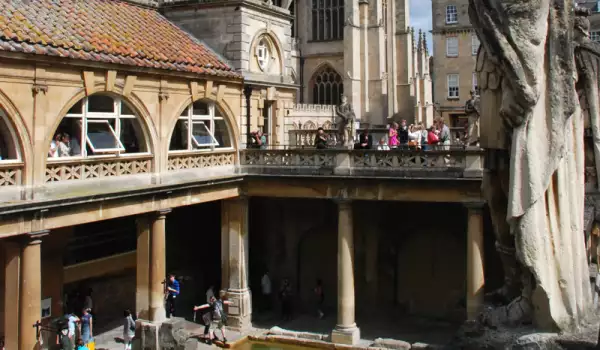Roman Baths in Bath

Roman baths were once one of the most important public buildings in ancient Rome, and today one of the best examples of ancient buildings to have managed to keep within the English town Bath, Located in the county of Somerset. Located about 160 kilometers west of capital London, city Bath is known for unique architectural monuments, which are included in the list of world cultural heritage sites of UNESCO.
Roman baths in Bath are located in the center of the city known for its mystical architecture depicting various masonic symbols such as circus and Royal Crescent, which symbolize sun and moon. Roman baths are now one of the biggest tourist attractions in Southwest England. It takes at least two hours tour for a person with full force to get to know those ancient architectures.
Roman Bath itself is located below the modern street and consists of four main parts - the sacred sring, Roman Temples, residential area and finds from the Roman baths, organized in a museum. On ground level is only room Pompeia (Pump Room), the upper part of the complex dates from the 19th century. Over a million visitors flock a year to the Roman Baths in Bath , this historic landmark is considered one of the 7 wonders of the west of England.
The first temple to replace the current hot springs was built by the Celts and is dedicated to the goddess Sulis, which the Romans knew as Minerva. According to historical writings of Geoffrey of Monmouth in 836 BC, the first bath was built by the British King Bladud. It is in the healing waters and mud baths of the locals he was healed of leprosy, if you believe the legend.
Over the centuries the structure of the Roman baths in Bath has been altered several times, including during the 12th century, when a new bathroom over royal sacred spring was built. South of it in the 16th century appears Queen's Bath. The spring itself is surrounded by buildings erected during the 18th century by John Wood, the Elder, his younger son, who designed the Royal Crescent. Even at the time of Pompey, neoclassical room has served as something like a public fountain accessible to everyone.

Today, the Roman baths in Bath are dangerous for swimming because the water passes through the still-functioning pipes and channels built by the Romans. However, here is a luxurious outdoor spa complex, which allows visitors to enjoy the fun and unique properties of water. However, emphasis in the complex remains on the museum. And today in the spring can be seen thousands of objects thrown in honor of the goddess.
They create huge wealth of Roman baths in Bath, as there are over 12.000 Roman coins, forming a unique treasure of Britain. Once in the spring were thrown lead sheets with messages and curses, in addition, in it was found a large number of metal cups with the initials DSM (DEAE Sulis Minerva).















